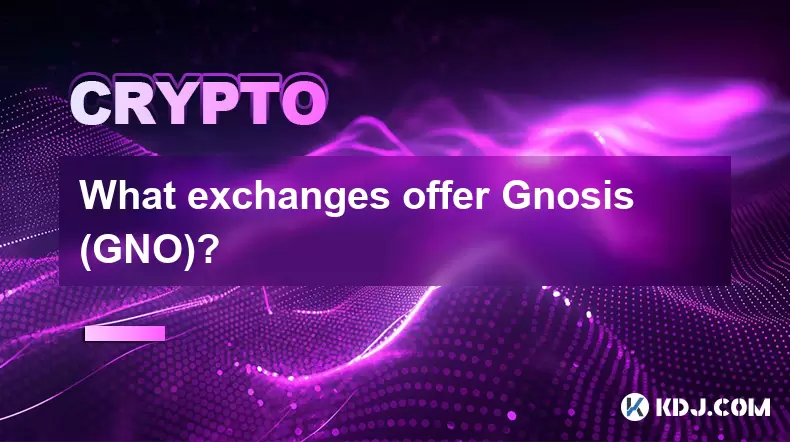-
 Bitcoin
Bitcoin $118600
-2.59% -
 Ethereum
Ethereum $4282
-0.42% -
 XRP
XRP $3.129
-4.21% -
 Tether USDt
Tether USDt $0.0000
0.01% -
 BNB
BNB $805.4
-1.80% -
 Solana
Solana $174.3
-5.77% -
 USDC
USDC $0.9998
-0.01% -
 Dogecoin
Dogecoin $0.2230
-6.33% -
 TRON
TRON $0.3466
1.70% -
 Cardano
Cardano $0.7745
-5.73% -
 Chainlink
Chainlink $21.37
-3.53% -
 Hyperliquid
Hyperliquid $42.93
-7.25% -
 Stellar
Stellar $0.4324
-4.94% -
 Sui
Sui $3.660
-7.17% -
 Bitcoin Cash
Bitcoin Cash $591.6
2.72% -
 Hedera
Hedera $0.2467
-7.04% -
 Ethena USDe
Ethena USDe $1.001
0.00% -
 Avalanche
Avalanche $22.92
-6.14% -
 Litecoin
Litecoin $118.8
-3.79% -
 Toncoin
Toncoin $3.378
-0.46% -
 UNUS SED LEO
UNUS SED LEO $9.011
-1.15% -
 Shiba Inu
Shiba Inu $0.00001294
-5.81% -
 Uniswap
Uniswap $11.24
0.53% -
 Polkadot
Polkadot $3.870
-6.16% -
 Cronos
Cronos $0.1662
-1.68% -
 Dai
Dai $1.000
0.02% -
 Ethena
Ethena $0.7915
-5.62% -
 Bitget Token
Bitget Token $4.414
-1.65% -
 Monero
Monero $259.3
-3.85% -
 Pepe
Pepe $0.00001120
-8.29%
Is SHIB coin quantitative trading reliable? How to optimize automatic buying and selling strategies?
SHIB coin's high volatility and social media influence make quantitative trading challenging yet potentially rewarding; optimizing strategies involves backtesting and continuous adjustment.
May 20, 2025 at 01:21 pm

Is SHIB Coin Quantitative Trading Reliable? How to Optimize Automatic Buying and Selling Strategies?
Quantitative trading, also known as algorithmic trading, has gained significant popularity in the cryptocurrency market, including with tokens like SHIB (Shiba Inu). The reliability of quantitative trading for SHIB coin depends on various factors, including the strategy used, market conditions, and the trader's ability to adapt and optimize their approach. In this article, we will explore the reliability of quantitative trading for SHIB coin and provide a detailed guide on how to optimize automatic buying and selling strategies.
Understanding Quantitative Trading for SHIB Coin
Quantitative trading involves using mathematical models and algorithms to make trading decisions. For SHIB coin, this can mean setting up automated systems to buy and sell based on specific criteria, such as price movements, volume changes, or other technical indicators. The reliability of these strategies hinges on their ability to accurately predict market movements and execute trades profitably.
When it comes to SHIB coin, its high volatility and the meme-driven nature of its market make quantitative trading both challenging and potentially rewarding. Traders must consider the unique characteristics of SHIB, such as its large supply and the influence of social media on its price, when developing their strategies.
Factors Affecting the Reliability of SHIB Coin Quantitative Trading
Several factors influence the reliability of quantitative trading for SHIB coin:
Market Volatility: SHIB coin is known for its extreme price fluctuations. While this can create opportunities for profit, it also increases the risk of significant losses if the trading algorithm is not well-tuned to handle such volatility.
Data Quality: The accuracy of the data used to train and run the trading algorithms is crucial. High-quality, real-time data can enhance the reliability of the trading strategy, while poor data can lead to inaccurate predictions and poor performance.
Algorithm Design: The design of the trading algorithm itself plays a significant role. A well-designed algorithm that takes into account the specific characteristics of SHIB coin, such as its correlation with other cryptocurrencies and social media sentiment, can improve reliability.
Backtesting and Optimization: Regular backtesting and optimization of the trading strategy are essential. This process involves testing the algorithm on historical data to see how it would have performed and making adjustments to improve its effectiveness.
How to Optimize Automatic Buying and Selling Strategies for SHIB Coin
Optimizing automatic buying and selling strategies for SHIB coin involves several steps and considerations. Here is a detailed guide on how to approach this process:
Setting Up the Trading Environment
Choose a Reliable Trading Platform: Select a platform that supports SHIB coin and offers robust API access for algorithmic trading. Popular choices include Binance, Coinbase Pro, and Kraken.
Install Necessary Software: Use programming languages like Python, which is widely used in quantitative trading. Install libraries such as
ccxtfor interacting with cryptocurrency exchanges andpandasfor data manipulation.Set Up a Secure Trading Account: Ensure that your trading account is secure with two-factor authentication and that you have adequate funds to execute trades.
Developing the Trading Algorithm
Define Trading Parameters: Determine the key parameters for your trading strategy, such as entry and exit points, stop-loss levels, and take-profit targets. For SHIB coin, you might consider factors like moving averages, RSI, and volume indicators.
Incorporate SHIB-Specific Factors: Consider the unique aspects of SHIB coin, such as its sensitivity to social media trends. You might integrate sentiment analysis tools to gauge public sentiment and adjust your trading strategy accordingly.
Write the Algorithm: Use a programming language to code your trading algorithm. Here is a basic example using Python:
import ccxt
import pandas as pdInitialize the exchange
exchange = ccxt.binance()
Fetch SHIB/USDT market data
ohlcv = exchange.fetch_ohlcv('SHIB/USDT', '1h')
Convert to DataFrame
df = pd.DataFrame(ohlcv, columns=['timestamp', 'open', 'high', 'low', 'close', 'volume'])
Calculate moving averages
df['MA50'] = df['close'].rolling(window=50).mean()
df['MA200'] = df['close'].rolling(window=200).mean()
Define trading logic
if df['close'].iloc[-1] > df['MA50'].iloc[-1] and df['close'].iloc[-1] > df['MA200'].iloc[-1]:
# Buy signal
exchange.create_market_buy_order('SHIB/USDT', 1000000) # Example order size
elif df['close'].iloc[-1] < df['MA50'].iloc[-1] and df['close'].iloc[-1] < df['MA200'].iloc[-1]:
# Sell signal
exchange.create_market_sell_order('SHIB/USDT', 1000000) # Example order size
Backtesting the Strategy
Gather Historical Data: Collect historical price and volume data for SHIB coin. This data is essential for backtesting your trading strategy.
Run Backtests: Use a backtesting framework to simulate how your strategy would have performed in the past. Adjust the parameters based on the results to improve performance.
Analyze Results: Look at key performance metrics such as profit and loss, win rate, and drawdown. Identify areas where the strategy can be improved.
Optimizing and Fine-Tuning the Strategy
Parameter Optimization: Use optimization techniques such as grid search or genetic algorithms to find the best combination of parameters for your trading strategy.
Risk Management: Implement risk management rules, such as setting stop-loss orders and diversifying your trading portfolio, to protect against significant losses.
Continuous Monitoring and Adjustment: The cryptocurrency market, including SHIB coin, is highly dynamic. Continuously monitor the performance of your trading strategy and make adjustments as needed based on changing market conditions.
Implementing and Running the Strategy
Deploy the Algorithm: Once you are satisfied with the performance of your strategy, deploy it on your chosen trading platform. Ensure that you have a robust system for executing trades automatically.
Monitor Performance: Regularly review the performance of your trading algorithm. Keep an eye on its profitability and adjust as necessary to adapt to market changes.
FAQs
Q1: Can I use quantitative trading strategies for other cryptocurrencies besides SHIB coin?
Yes, quantitative trading strategies can be applied to other cryptocurrencies. However, each cryptocurrency has unique characteristics, so the strategies may need to be adjusted accordingly. For example, Bitcoin and Ethereum may require different parameters and considerations compared to SHIB coin.
Q2: What are the risks associated with quantitative trading of SHIB coin?
The risks include market volatility, technical failures, and the potential for the algorithm to make incorrect predictions. It's crucial to implement robust risk management practices and continuously monitor and adjust your strategy to mitigate these risks.
Q3: How much capital do I need to start quantitative trading with SHIB coin?
The amount of capital needed can vary depending on your trading strategy and risk tolerance. It's advisable to start with a small amount and gradually increase your investment as you gain more experience and confidence in your strategy.
Q4: Are there any tools or platforms specifically designed for quantitative trading of SHIB coin?
While there are no platforms specifically designed for SHIB coin, general quantitative trading platforms like QuantConnect, MetaTrader, and TradingView can be used. These platforms offer the necessary tools and APIs to develop and deploy trading algorithms for SHIB coin and other cryptocurrencies.
Disclaimer:info@kdj.com
The information provided is not trading advice. kdj.com does not assume any responsibility for any investments made based on the information provided in this article. Cryptocurrencies are highly volatile and it is highly recommended that you invest with caution after thorough research!
If you believe that the content used on this website infringes your copyright, please contact us immediately (info@kdj.com) and we will delete it promptly.
- Dogecoin, Presale, Surge: Riding the Meme Coin Wave
- 2025-08-12 11:10:12
- Dogecoin, Tron, and the ROI Reality Check: What's a Crypto Investor to Do?
- 2025-08-12 11:15:12
- Ethereum Layer-2 Scaling Competition Heats Up as ETH Breaks $4K
- 2025-08-12 10:30:12
- China Regulation, Stablecoins, and BNB Presale: Navigating the Crypto Landscape
- 2025-08-12 11:30:12
- Meme Coins, Investment, and Token Burns: What's Hot in 2025?
- 2025-08-12 10:30:12
- China's National Security Alarm Bells Ring Over Worldcoin's Iris Scans
- 2025-08-12 11:35:12
Related knowledge

How to purchase Aragon (ANT)?
Aug 09,2025 at 11:56pm
Understanding Aragon (ANT) and Its PurposeAragon (ANT) is a decentralized governance token that powers the Aragon Network, a platform built on the Eth...

Where to trade Band Protocol (BAND)?
Aug 10,2025 at 11:36pm
Understanding the Role of Private Keys in Cryptocurrency WalletsIn the world of cryptocurrency, a private key is one of the most critical components o...

What is the most secure way to buy Ocean Protocol (OCEAN)?
Aug 10,2025 at 01:01pm
Understanding Ocean Protocol (OCEAN) and Its EcosystemOcean Protocol (OCEAN) is a decentralized data exchange platform built on blockchain technology,...

Where can I buy UMA (UMA)?
Aug 07,2025 at 06:42pm
Understanding UMA and Its Role in Decentralized FinanceUMA (Universal Market Access) is an Ethereum-based decentralized finance (DeFi) protocol design...

What exchanges offer Gnosis (GNO)?
Aug 12,2025 at 12:42pm
Overview of Gnosis (GNO) and Its Role in the Crypto EcosystemGnosis (GNO) is a decentralized prediction market platform built on the Ethereum blockcha...

How to buy Storj (STORJ) tokens?
Aug 09,2025 at 07:28am
Understanding Storj (STORJ) and Its Role in Decentralized StorageStorj is a decentralized cloud storage platform that leverages blockchain technology ...

How to purchase Aragon (ANT)?
Aug 09,2025 at 11:56pm
Understanding Aragon (ANT) and Its PurposeAragon (ANT) is a decentralized governance token that powers the Aragon Network, a platform built on the Eth...

Where to trade Band Protocol (BAND)?
Aug 10,2025 at 11:36pm
Understanding the Role of Private Keys in Cryptocurrency WalletsIn the world of cryptocurrency, a private key is one of the most critical components o...

What is the most secure way to buy Ocean Protocol (OCEAN)?
Aug 10,2025 at 01:01pm
Understanding Ocean Protocol (OCEAN) and Its EcosystemOcean Protocol (OCEAN) is a decentralized data exchange platform built on blockchain technology,...

Where can I buy UMA (UMA)?
Aug 07,2025 at 06:42pm
Understanding UMA and Its Role in Decentralized FinanceUMA (Universal Market Access) is an Ethereum-based decentralized finance (DeFi) protocol design...

What exchanges offer Gnosis (GNO)?
Aug 12,2025 at 12:42pm
Overview of Gnosis (GNO) and Its Role in the Crypto EcosystemGnosis (GNO) is a decentralized prediction market platform built on the Ethereum blockcha...

How to buy Storj (STORJ) tokens?
Aug 09,2025 at 07:28am
Understanding Storj (STORJ) and Its Role in Decentralized StorageStorj is a decentralized cloud storage platform that leverages blockchain technology ...
See all articles

























































































